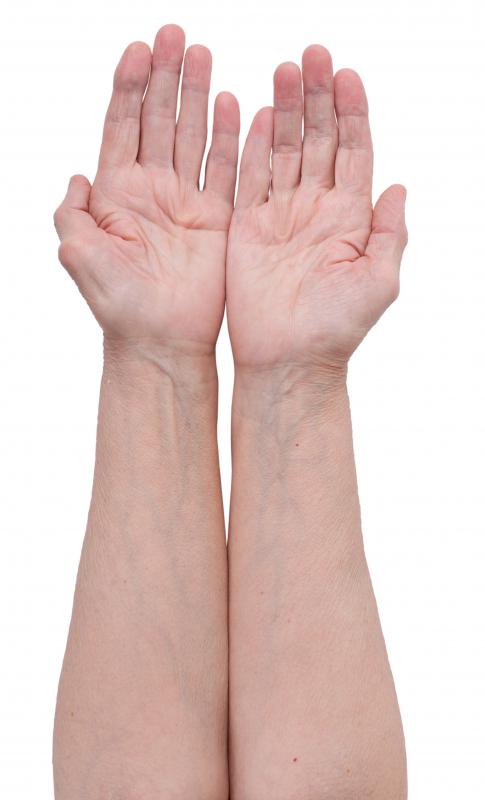At TheHealthBoard, we're committed to delivering accurate, trustworthy information. Our expert-authored content is rigorously fact-checked and sourced from credible authorities. Discover how we uphold the highest standards in providing you with reliable knowledge.
What are Blood Vessels?
Blood vessels are part of the circulatory system, which passes nutrients, blood, hormones, and other important substances to and from body cells in order to maintain homeostasis. The blood vessels are responsible for transporting blood throughout the body. There are three major types of blood vessels: arteries, veins, and capillaries.
Oxygen is the most important nutrient carried by the blood. Arteries carry oxygenated blood from the heart to all the structures of the body. Capillaries are very small, permeable vessels at which the exchange of water and chemicals between the blood and body tissues takes place. The veins carry deoxygenated blood from the capillaries back to the heart.

Arteries and veins have the same structure. They are composed of three layers: the tunica intima, the tunica media, and the tunica adventitia. The tunica intima in the innermost layer, as well as the thinnest. It consists of a layer of simple squamous endothelium, with a layer of connective tissue underneath.
The intermediate tunica media is the thickest layer of the blood vessel. It contains elastic fibers, connective tissue, and in some vessels, smooth muscle. The smooth muscle controls the size of the blood vessel; for instance, it can make a particular vessel wider if a specific area requires increased blood supply. The widening of the blood vessels in called vasodilation, while a narrowing of the vessels is called vasoconstriction. Both processes are controlled by the autonomic nervous system, and are not under conscious control.
The tunica adventitia is the outermost layer of the veins and artieries. It consists of connective tissue, with no epithelium. In the larger blood vessels, it also contains nerves and capillaries, called the vaso vasorum.

The capillaries are much simpler in structure than the arteries and veins. They usually consist of a layer of simple squamous epithelium, though some have connective tissue as well. The capillaries must be very tiny in order to allow for the exchange of nutrients between the blood and the body tissues.
Tiny arteries leading to capillaries are called arterioles, while tiny veins leading from capillaries are called venules. The largest artery, leading from the heart, is the aorta, while the largest vein, carrying blood into the heart, is the vena cava. The pulmonary artery and the pulmonary vein, which are the blood vessels leading to and from the lungs, respectively, are the only artery carrying deoxygenated blood and the only vein carrying oxygenated blood in the body.
AS FEATURED ON:
AS FEATURED ON:
















Discussion Comments
It's amazing the amount of work they do to keep the blood flowing,
I'm doing a report on the blood vessels in school and this information has helped me in this project.
@surreallife: Thanks for that tip! I had no idea that walnuts served that purpose.
Keep you blood vessels young by eating walnuts. Not more than 50g a day though. Walnuts are calorie dense so it would be easy to gain weight.
Post your comments